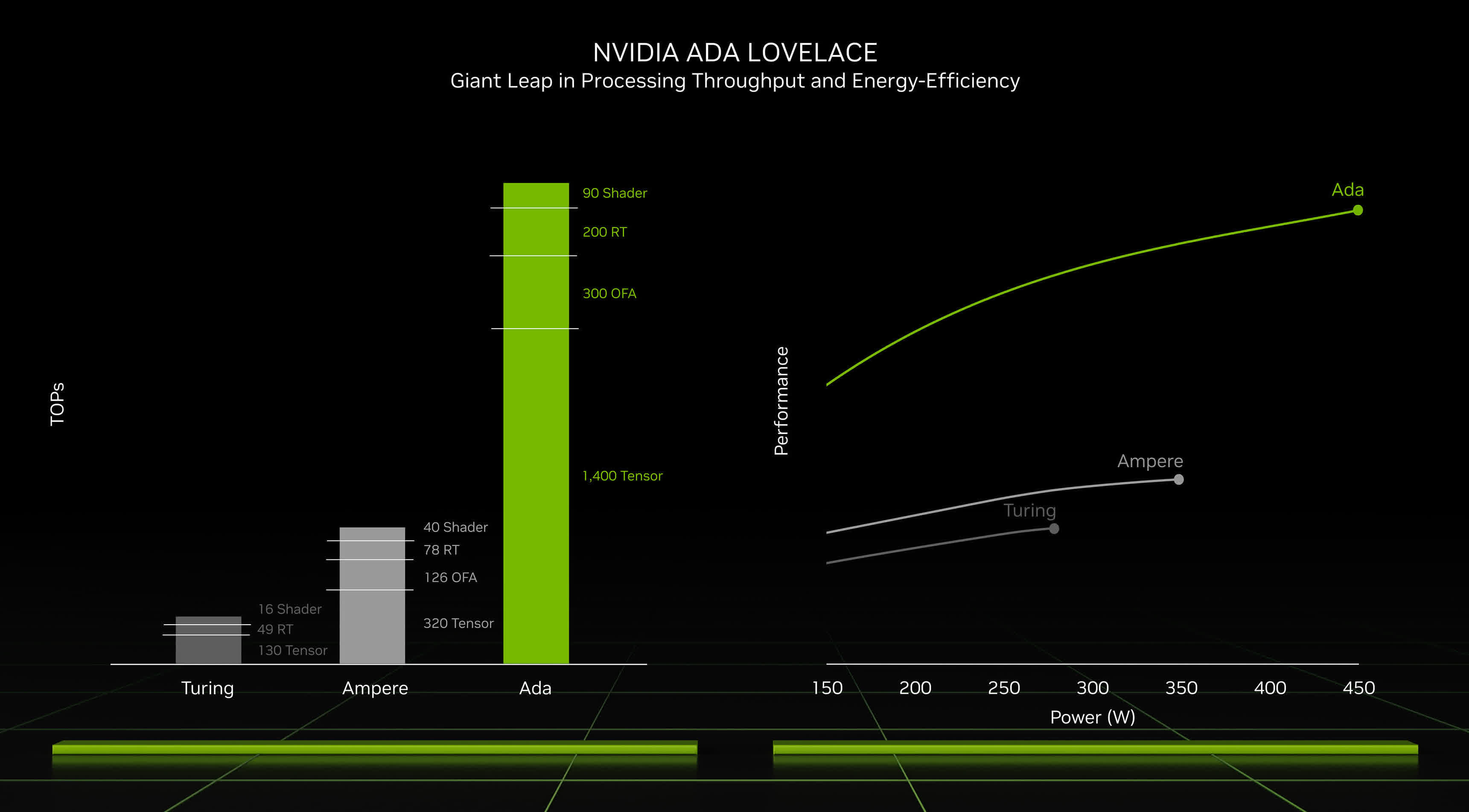In context: A brief comment during Nvidia's announcement of the RTX 4000 series graphics cards sheds some light on the flagship model's overclocking potential. It isn't unprecedented, strictly speaking, but it could push some new boundaries for the latest GPU tech, depending on future details, such as what kind of cooling it required.
While presenting the new Ada Lovelace GPU series, Nvidia CEO Jensen Huang claimed the company overclocked the GeForce RTX 4090 to 3.0GHz in its labs. What that means could depend on information that might not come out until the card is in users' hands. Leaked 4090 benchmarks reported the same number earlier this month without further details.
Huang didn't dwell on the comment before moving on (about 16 minutes into the video above), so we don't know what kind of cooling or how much wattage Nvidia's labs used to reach 3.0GHz. That number is slightly under last year's standing GPU overclock world record of 3.2GHz that an AMD Radeon RX 6900 XT managed through liquid nitrogen cooling.
Older GPUs have topped 3.0GHz using similar methods, but the 4090 reaching that point with its incredible 76 billion transistors is an outstanding milestone. It would be even more impressive if it turns out that Nvidia got there with air cooling.

Overclocking also raises some power-draw concerns that the Lovelace announcement hushed initially. Many users feared the RTX 4090 could require 600W --- a worrying number for those living under rising energy bills. Later rumors brought that number down before Nvidia confirmed the 4090 only needs 450W --- the same as the 3090Ti. However, could the 4090 need 600W to reach 3GHz? Its official boost clock is 2.52GHz.
The GeForce RTX 4090 hits shelves on October 12, starting at $1,599. The 12GB and 16GB variants of the RTX 4080 arrive in November for $899 and $1,199, respectively. The cards feature third-generation RT cores, AV1 encoding (this year's new GPU generations from all three manufacturers will add the feature), DLSS3, and other improvements over the RTX 30 series.
Critics immediately challenged Nvidia over Lovelace's high prices, as overall GPU demand is trending downward after remaining at historic levels over the last two years. However, Huang defended the MSRP, declaring Moore's Law dead.
"The idea that the chip is going to go down in price is a story of the past," he said.